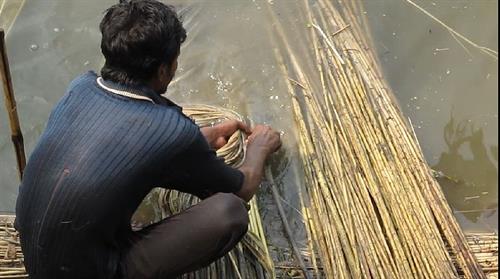
PUMPA - SMART LEARNING
எங்கள் ஆசிரியர்களுடன் 1-ஆன்-1 ஆலோசனை நேரத்தைப் பெறுங்கள். டாப்பர் ஆவதற்கு நாங்கள் பயிற்சி அளிப்போம்
Book Free DemoMicroorganisms are useful to human beings in many ways. Making medicines, cleaning up the environmental pollution and microbes are also help human beings in making cloth and leather.
Microbes in the field of medicine
In most of the manufacturing of antibiotics, many microorganisms are used.
In short, antibiotics can be described as drugs obtained from one microorganism, which is effective in killing other microorganisms. Mostly, bacterias are used in manufacturing antibiotics. Nowadays, many fungi and algae are also being used.
Example:
Penicillium, streptomycin, erythromycin are some of the most widely used antibiotics made from bacteria and fungi.
Important!
However, antibiotics are ineffective against viruses.
Vaccines
From our childhood, we should have been injected with various vaccines to protect against the microbes entering our body.
Vaccines contain dead or weakened microorganisms.
Generally, when a microorganism enters our body, our body will have antibodies that will fight against the microorganisms entered and will protect the body from getting infected. The body will remember the same and this process will be repeated if the microorganism tries to enter again. This is how a vaccine works.
Example:
One of the most important vaccines in India is the Pulse Polio Programme. It is recommended for infants below the age of 5, to make the body immune against poliovirus, which can lead to paralysis.
Use of microorganisms in Agriculture
Have you ever seen large dead animals or decayed plants get disintegrated and disappear after some time? This is because of the microorganisms.
Microorganisms decompose dead organic waste of plants and animals and convert them into simple substances. These substances are again used by other plants and animals. Thus, microorganisms degrade the harmful substances and thereby clean up the environment and help in making the soil fertile.
This ability of certain bacteria to disintegrate the harmful substances are effectively used in bioremediation.
Using bacteria to clean up pollution is known as 'bioremediation'. Bioremediation uses microorganisms to reduce pollution through the biological degradation of pollutants into non-toxic substances.
Example:
Some of the bacterias used in bioremediation are given below:
Pseudomonas putida, Dechloromonas aromatica, Deinococcus radiodurans.Rhizobium is a genus of bacteria that lives in the root nodules of leguminous plants, such as beans and peas, with which it has a symbiotic relationship. The atmospheric nitrogen gets fixed through these microbes. This makes the soil rich in nitrogen.
Retting and tanning
Bundles of flax plants are tied together and soaked in water for a few days. Bacteria, especially Pseudomonas aeruginosa, acts on the stem tissues and loosen the fibres in the stem. These fibres are then processed to make linen thread. This process is known as retting.

In the same fashion, the skin of animals after cleaned up sufficiently were soaked in water. Bacteria acting on the skin make it soft and pliable. This process is known as tanning.
Thus through retting and tanning, bacteria help in making cloth and leather.